Section rstp agreement
1. Review of STP technology point of
1.1, what is the role of STP
1, by blocking the port to achieve the purpose of our broken ring
2, redundancy can be
1.2, the STP port role and which of?
Root port (RP) on the non-root switch election
designated ports (DP) elections on each link
blocked port (AP) is performed in a non-blocking root switch logic
summary: Change the second port role becomes
1.3, STP's port state and which of?
disable: a spanning tree off
block: AP final status of the port must be Block
Listening: From listening to learning needs 15s
Learning: from learning to forwarding required 15s
forwarding: final state port DP and RP ports must be forwarding
Summary: forwarding a port from disbale to take at least 30s of
1.4, the working principle of STP
1.4.1, Layer 2 switching network will be the election of a switch out of rOOT
1.4.2, on a non-root switch port that will elect a RP RP port ROOT switch is to reach an optimal path
1.4.3, a given in every election port link above this designated port is used to send or forward a BPDU all interfaces the BPDU general ROOT switch is specified above port
1.4.4, blocked ports or forward user traffic but can receive BPDU
1.5 Port (RP DP port or port) election rules
1.5.1, BID comparator device (ROOT switch is Comparative)
1.5.2, compare the value of the cost (the sum of the costs) ROOT switch interface is generally Comparative this is a port RP
1.5.3, the sending device BID (generally more DP port this one)
PID 1.5.4, the transmitting device
1.5.5, their PID
Stp disadvantages:
1 stp from the initial state to complete convergence subject to at least 30s
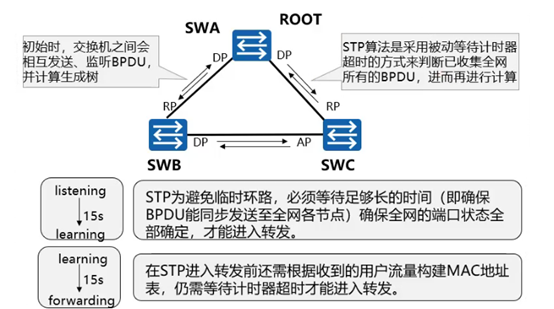
2 when the link break, this time the original AP will switch to a blocked port RP root port, the port needs to forwarding state to 30s, when the AP if the root receives a BPDU packet, still need to wait aging time of 20s
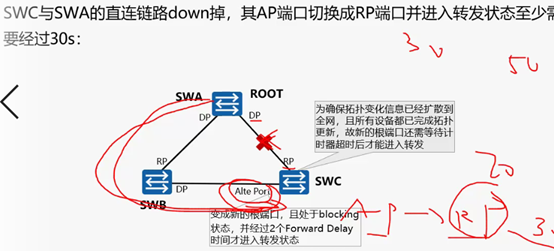
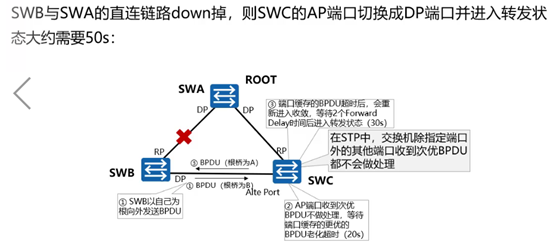
3 stp terminal apparatus connected to the switch, the forwarding state need 30s

4 stp topology changes
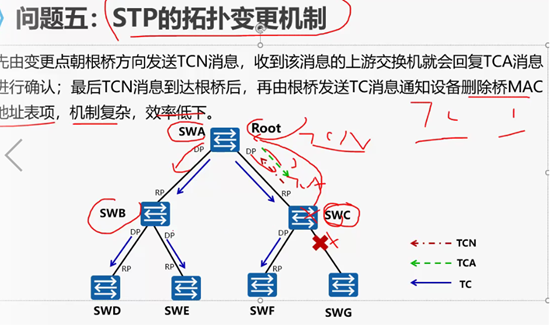
5 stp port status of five species, which are not forward nor learning
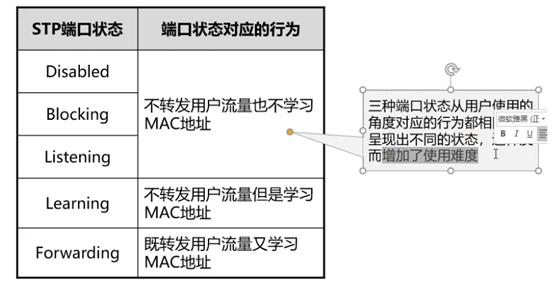
RSTP:
Rstp upgrade stp, he reduced the convergence time of stp
BP port 1 is added, as a backup DP port, a backup port for the AP RP port
BP and AP ports have played a role in blocking
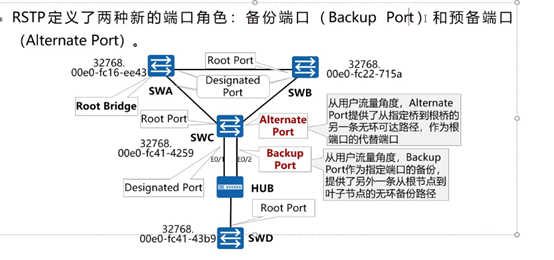
BP was in the Port dp port can be immediately converted DP port to the forwarding state
AP RP was in port port can be immediately converted RP state to the Forwarding state
2 only three in the state RSTP port
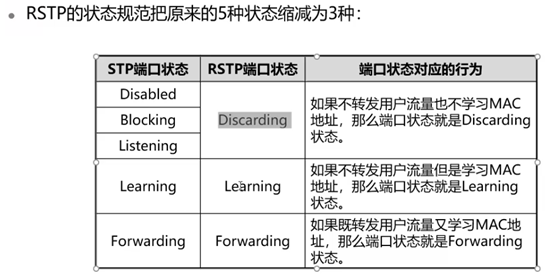
3P / A mechanism:
condition:
1 point
DP between 2 RP and
P / A mechanism: the connection between the two switches SW1 and SW2 to SW1 due BID BID 4096 is 8192 because SW1 SW2 is P sends an set of BPDU packets to SW2 case (in this case a port role of SW1 Discarding DP), after receiving the synchronization when SW2 variables (block other ports except the port edge, to prevent loops) SW2 sends a sync a good set of BPDU packets to SW1 (SW2 are the port Forwarding RP) when SW1 A set receive a BPDU Upon receipt, the port immediately enter Forwarding

Such as
Case 1:
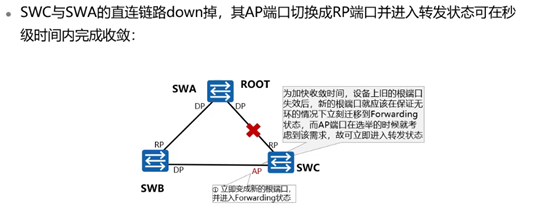
Case 2:
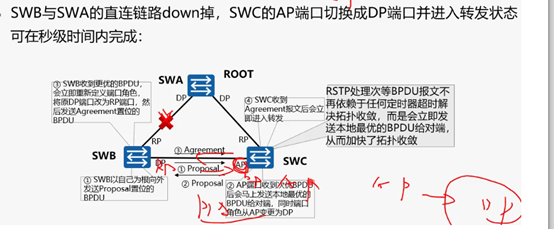
When the switch between the swa and swb link fails, since the receiving port AP BPDU packets sent by the exchange is less than the root, as to make their root swb Send set p BPDU packets, SWC will return with a set the BPDU packets, such swb original DP RP port into the port, and the original AP port into swc DP port to forwarding rapidly,
No longer need to wait for aging time swc switch the 20s
In this case is P / A between dp RP and mechanisms of swb of swc
4 edge port: the port is used to access the terminal device,
Enter interface view, the port is set to an edge port, the access terminal enters the device quickly forwarding state without 30s
Stp edge-port enable
